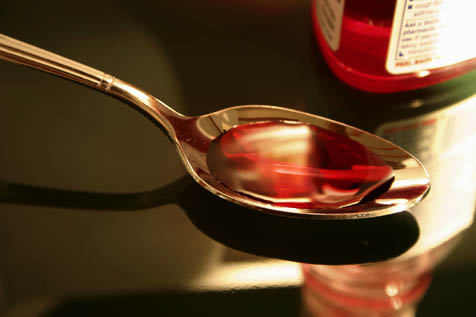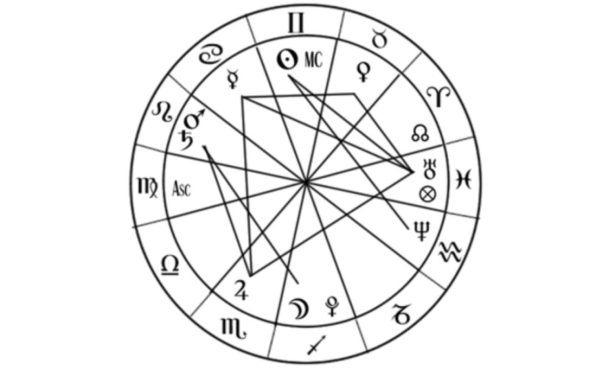Another Round of Meds Gets Pulled from Shelves
Gone, Baby, Gone

Over-the-counter (OTC) cough, cold, and allergy medicines for children younger than two years of age are now mercifully departed from drugstore shelves. Some people might be tempted to think that kids are safe from the harm these sickly sweet syrupy drugs (which have never been properly tested on young bodies) can-and have-wreaked. They would be wrong. Though a Food and Drug Administration (FDA) advisory committee recently recommended these medicines be banned from the mouths of babes younger than six, it could be a year before the agency makes its official decision on the matter. That means plenty of brands and flavors will continue to be marketed for use in kids older than two, even though no scientific study has ever shown them to be more effective than a placebo and their safety record is dubious at best.
I made myself comfortable in the aisle of my neighborhood Rite Aid last week to examine the labels of these products that, if the pictures on their boxes are to be believed, will in a matter of minutes turn an exasperating, runny-nosed toddler into a cooperative cherub. Many contain dextromethorphan, a synthetic narcotic that, in adults, can function as a cough suppressant. Known on the street as DXM, or the poor man’s PCP, it’s technically a respiration depressor. Richard Gorman, a Baltimore pediatrician and spokesperson for the American Academy of Pediatrics (AAP), said in small doses, dextromethorphan slows breathing. In large doses, it stops it. Others brands contain phenylephrine, a nasal decongestant that can cause heart palpitations. Pseudoephedrine, a central nervous system stimulant used to make meth, is still an ingredient in a few, but they’re kept behind the counter. Taken in correct amounts (which can only be guessed at because no double-blind, randomized clinical trial has been done on these drugs in the pediatric population), the risk of harming your child is small, Gorman said. But they don’t work in young kids, so he questioned, why risk it at all?
There were dozens of cough and cold products on the pharmacy shelf. Some combined an antihistamine with a pain reliever, some had an expectorant, and others mixed a decongestant with a cough suppressant. One, sold under the brand name Little Noses, listed phenylephrine on the label. It featured a baby in a diaper crawling across the package even though the label directs parents to consult a doctor before giving it to a child younger than two.
This matter inspires not a little bit of cynicism for the regulatory function that’s meant to be provided by the FDA. Gorman said pediatricians have known these drugs are next to useless in the young since the 1970s. The AAP issued its first policy statement on the subject in 1978 and reaffirmed it in 1997. The problem, according to Gorman, is the drugs used in these formulas were approved before the FDA had adopted strict approval guidelines for effectiveness and safety. They were grandfathered in.
The irony, according to Gorman, is the FDA owes much of what it is today to the deaths of about 100 children in 1937, when the manufacturers of sulfanilamide, an early antibiotic, attempted to make it into a liquid form so children could take it. To do that, they used a compound called diethylene glycol. But diethylene glycol, though sweet tasting, is a poisonous antifreeze. After about 100 children died lingering, painful deaths, Congress passed the Federal Food and Drug and Cosmetic Act of 1938, which required drugs to be proved safe before being marketed. It was the genesis of drug testing.
Drug companies tend to make drugs for adults, so when a child has a disease like high cholesterol or hypertension for which there is an effective drug used in adults, doctors will give it to the child without knowing a lot about its effects. However, since 1997, any new drug up for approval that is clearly going to be used by children has to be tested on a small cohort of youngsters. But drug companies haven’t been rushing to go back and test drugs whose patents have expired.
Greg Gaitan, a Santa Barbara pediatrician at Sansum Clinic, said he does not recommend any of the OTC cold and cough medications for children of any age. Their effectiveness, even in older children, is minimal, and it’s too easy for parents to give larger than recommended doses; a simple miscommunication between a babysitter and a parent or a husband and a wife will do it.
So, when your child gets a cold, Gaitan recommends simple remedies: straightforward hydration (i.e. fluids), nasal suction (using one of those devices that looks like a miniature turkey baster, except instead of turkey drippings, it suctions snot), humidifiers, and finally patience because, as the saying goes, this too shall pass.



